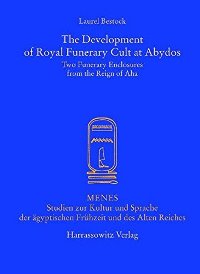| Main » Ad Board » ДРЕВЕН ЕГИПЕТ И АФРИКА » Археология |
Laurel Bestock - The Development of Royal Funerary Cult at Abydos: Two Funerary Enclosures from the Reign of Aha
| 23.12.2012, 19:58 | |
  Изследване на два оградени погребални участъка в Абидос, заупокоен център (гробниците в Ум ел Кааб) на фараоните от I династия - обединители на страната. Въз основа на находките в тях е реконструирано развитието на погребалните представи и обичаи по времето на Аха (ок. 3118-3007 г. пр. н.е.), считан от мнозина учени за Менес - легендарния основател на египетската монархия.
- Дефиниране на царската власт в Ранното царство на Древен Египет;
- Некрополи U и B в Абидос: описание и интерпретация;
- Гробницата на Хор Аха;
- Гробниците на наследниците на Аха: Джер, Джет, Мернейт;
- Ранни и модерни изследвания на гробниците в Абидос (Ум ел Кааб);
- Най-новите разкопки в северния некропол и откриването на нови заграждения около погребалния комплекс на Аха;
- Трите гробници на Аха;
АЛТЕРНАТИВЕН ЛИНК / ALTERNATIVE LINK:
КАТО ДОКТОРСКА ДИСЕРТАЦИЯ / AS A PH.D.:
- на английски език, от Google Drive,формат PDF, файлът не е архивиран. Сваляне с ляв бутон (left button) от страницата на предоставящия сървър, после през бутона стрелка надолу/after by down arrow button.
| |
| Views: 1891 | Placed till: 23.11.2022 | Rating: 0.0/0 | |
